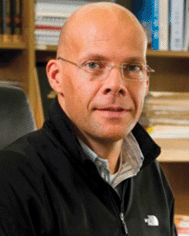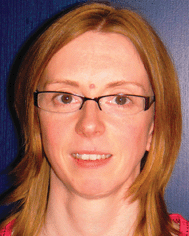Chem Soc Rev leads the way
Abstract
As Chem Soc Rev becomes bi-monthly, we reflect on what sets the journal above the rest.
Increasing issues
From 2012, Chem Soc Rev moves to an impressive 24 issues per year, making it the most frequently published chemistry review journal. This is the result of the journal's rapid growth, with a 40% increase in content observed over the past three years. In 2011, we published 315 review articles which is significantly more than both our closest competitor journals (Fig. 1).† With twice the number of issues, Chem Soc Rev will be reaching the community much faster, benefiting our authors and readers.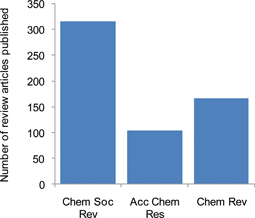 | ||
| Fig. 1 Number of review articles published in Chem Soc Rev and its competitor journals in 2011.† | ||
Rising in impact
Not only are we the number one review journal in terms of the quantity of chemistry published, but our impact factor continues to climb as well. Our latest impact factor (2010 Journal Citation Reports® (Thomson Reuters, 2011)) was announced at an incredible 26.583—almost a third higher than the previous year (Fig. 2).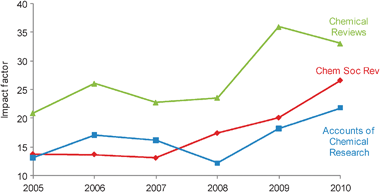 | ||
| Fig. 2 General chemistry review journal impact factors. | ||
This reflects the exceptionally high impact reviews published in the journal by leading and emerging scientists from across the globe. Early estimates indicate that the 2011 impact factor will continue to grow which will make it the 4th year in a row that we have seen an increase. A truly outstanding achievement we hope you agree.
Worldwide science
Chem Soc Rev continues to receive strong support both from the UK and overseas. In 2011, we published a significant number of reviews from the USA, China, Germany and the UK (Fig. 3), all leading countries in the field of chemical research. Furthermore, and in contrast to our competitors, the geographical breakdown of publications in 2011 was also balanced, mirroring the journal's international readership.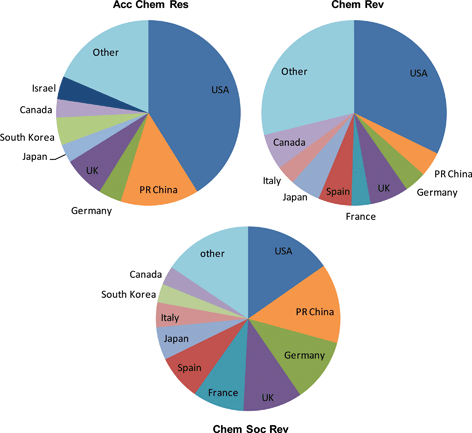 | ||
| Fig. 3 Geographical breakdown of publications in general chemistry review journals in 2011.† | ||
In the coming year, we plan to maintain the numbers of publications from the UK and China whilst concentrating on increasing awareness and submissions in the USA, the Netherlands and Switzerland.
The Chem Soc Rev editorial staff will be attending conferences both nationally and internationally, further raising the visibility of the journal and commissioning high quality reviews. Details on which conferences we will be attending will be announced in due course.
With these numbers in mind, it's not hard to understand why Chem Soc Rev is such a popular choice for the chemistry community. The top accessed 2011 reviews (Tables 1 and 2) demonstrate the sheer breadth of chemical science that we publish, encompassing research in nanomaterials, supramolecular chemistry and organic synthesis.
| Review title | Authors | DOI |
|---|---|---|
| Applications of advanced hybrid organic–inorganic nanomaterials: from laboratory to market | Clément Sanchez, Philippe Belleville, Michael Popall and Lionel Nicole | 10.1039/C0CS00136H |
| Graphene nanosheet: synthesis, molecular engineering, thin film, hybrids, and energy and analytical applications | Shaojun Guo and Shaojun Dong | 10.1039/C0CS00079E |
| MOF thin films: existing and future applications | O. Shekhah, J. Liu, R. A. Fischer and Ch. Wöll | 10.1039/C0CS00147C |
| C–H functionalization logic in total synthesis | Will R. Gutekunst and Phil S. Baran | 10.1039/C0CS00182A |
| Towards mild metal-catalyzed C–H bond activation | Joanna Wencel-Delord, Thomas Dröge, Fan Liu and Frank Glorius | 10.1039/C1CS15083A |
| Review title | Authors | DOI |
|---|---|---|
| New sensing mechanisms for design of fluorescent chemosensors emerging in recent years | Jiasheng Wu, Weimin Liu, Jiechao Ge, Hongyan Zhang and Pengfei Wang | 10.1039/C0CS00224K |
| Cyclodextrin-based inclusion complexation bridging supramolecular chemistry and macromolecular self-assembly | Guosong Chen and Ming Jiang | 10.1039/C0CS00153H |
| Postsynthetic modification of metal–organic frameworks—a progress report | Kristine K. Tanabe and Seth M. Cohen | 10.1039/C0CS00031K |
| Self-assembly of inorganic nanorods | Kun Liu, Nana Zhao and Eugenia Kumacheva | 10.1039/C0CS00133C |
| Metal-catalysed approaches to amide bond formation | C. Liana Allen and Jonathan M. J. Williams | 10.1039/C0CS00196A |
We are always on the look-out for high quality reviews and welcome proposals for consideration by the Editorial Board. Please contact the Editorial Office for further details.
Themed issues
We constantly strive to publish frontline research from across the chemical sciences, using themed issues to offer a rich variety for our readers. This year, we have compiled themed issues on a number of subjects including DNA-based nanotechnology, guest edited by Professors Mitsuhiko Shionoya, Guido Clever and Chengde Mao and Dr Eugen Stulz, and a themed issue inspired by the 2010 Nobel Prize on Cross Coupling Reactions, guest edited by Professor Matthias Beller.We have already set the ball rolling for the next celebratory Nobel Prize themed issue on quasicrystals amongst several others for 2012, including Green Chemistry, guest edited by Professors C.-J. Li and Paul Anastas, and Nanomedicine, guest edited by Professors Frank Caruso, Vincent Rotello and Taeghwan Hyeon. In going bi-monthly, we will be publishing even more themed issues and would be delighted to hear your suggestions for future topics.
Recognising achievement
At Chem Soc Rev, we are passionate about recognising significant achievement from members of the chemistry community. To reflect this, we have doubled the 2012 Chem Soc Rev Emerging Investigator Lectureship honorarium to £1000. This lectureship is awarded to an early-career scientist who has made outstanding contributions in their field of research. Many congratulations to Professors Cristina Nevado from the University of Zurich, who received the 2011 Emerging Investigator Award, and Stephen Leone from the University of California, Berkeley, who received the 2011 Lecture Award.Editorial Board developments
At the end of 2011, Professor Carsten Bolm completed his term of service on the Chem Soc Rev Editorial Board. Carsten has been responsible for helping to drive up awareness of the journal across the organic chemistry community and Germany, and has offered his expertise on a number of themed issues including the Chem Soc Rev 2007 issue on Organometallics in Heterocyclic Chemistry. We sincerely thank Carsten for all of his help over the past 10 years and wish him every success with his continuing research.
At the beginning of last year, we welcomed Professors Philip Gale and Douglas Stephan as Associate Editors for Chem Soc Rev. Their appointment is in line with the introduction of Associate Editors across many other RSC journals, providing authors with the choice to state their handling editor preference at submission. Both Phil and Doug are already receiving a significant number of reviews and are proving to be strong assets to the journal. Watch out for future Associate Editor and Editorial Board member appointments in Chem Soc Rev.
Talk to us…
Our commitment to publishing the highest quality science in the subjects you want to read is paramount. As such, your comments and ideas are invaluable for helping us achieve this goal. Please email the Chem Soc Rev Editorial Office at E-mail: chemsocrev-rsc@rsc.org; so that we can continue to move onwards and upwards. Don't forget to follow us on Twitter (http://www.twitter.com/chemsocrev) and visit the Chem Soc Rev blog (http://blogs.rsc.org/cs) to hear our latest journal announcements and news.Looking to the future
On the eve of change, it is only right to look back at how far Chem Soc Rev has come. Seven years ago, we had only just moved to 12 issues per year, we had not published a themed issue and were the least well-known of all the chemistry review journals. Today, we are an internationally-recognised leader in the field and can boast of both high impact and topical quality reviews. With our remarkable growth, cutting-edge themes and renowned Associate Editors and Editorial Board, we anticipate that the best is still to come.We could not have done this without the unwavering support from all of our authors, referees, and Editorial and Advisory Board members, ensuring that Chem Soc Rev maintains its reputation for publishing top-quality chemistry.
RSC Publishing growth and successes
Journals from RSC Publishing are delivering impressive results on Impact Factors, growth in quality content and international visibility and influence. The 2010 Journal Citation Reports® proved that our quality is better than ever, and that is thanks to our authors and referees. Of the top 20 journals in the multidisciplinary chemistry category, 25% are from RSC Publishing. Plus 83% of our journals listed in this year's report have an IF above 3.The number of articles published in our journals has almost doubled in just two years—and our share of the total has also nearly doubled in that time. More titles have recently joined our portfolio: RSC Advances and Catalysis Science & Technology. And Chemical Science received the ALPSP Award for Best New Journal 2011.
So more and more authors—from 70+ countries in 2011—are trusting us to ensure their research is communicated to the global community. Our Editorial and Advisory Boards are international, and our publishing operation is supported by offices in USA, China, India and Japan. Plus our content is downloaded by growing numbers of readers in virtually every country in the world.
These facts demonstrate that RSC journals are increasingly valued as a key resource for the very best research. www.rsc.org/journals
Books delivering the latest research advances, information, opinions and perspectives in modern science, confirms our reputation as one of the fastest and most dynamic publishers in the world.
In an age where content is key, we understand the importance of your online chemical science resource. The RSC eBook Collection now holds more than 1000 books, equating to over 25![[thin space (1/6-em)]](https://www.rsc.org/images/entities/char_2009.gif) 000 chapters, and spanning more than 40 years. The publication of our 1000th eBook in 2011 was a celebratory milestone.
000 chapters, and spanning more than 40 years. The publication of our 1000th eBook in 2011 was a celebratory milestone.
We continue to provide expert, interdisciplinary chemical science books: over 100 new print titles are planned for 2012 alongside the launch of several new series including:
• Food and Nutritional Components in Focus
• New Developments in Mass Spectrometry
• New Developments in NMR
• RSC Smart Materials
Our ability to deliver fast, accurate information to our customers was rewarded by the BIC Basic Award, an accolade held by few publishers. www.rsc.org/books
RSC Publishing Platform
Access one million journal articles and book chapters in one simple integrated search.The RSC Publishing Platform provides the most valued interface and features that connect you with the highest quality scientific research. With one single search box, students, academics, researchers, scientists and professionals can easily access our books, journals and databases. www.rsc.org/platform
To access content on the go, download our RSC Mobile app for your electronic device. www.rsc.org/rscmobile
Free online access
Free online access is available to all our newest journals, and much more—all you need to do is register for an RSC Publishing Personal Account. Once logged in, you will be able to access all our free content including:• All content of our newest journals for the first two volumes
• Any articles that are part of a special free access promotion (e.g. ‘hot’ papers, web themed issues, etc.)
• A sample chapter from each book in the RSC eBook Collection
With your username and password you can access free content any time, any place—all you need is internet access. You can also save searches and favourite articles. Register now at www.rsc.org/personalregistration
If your institution/organisation is a current customer or on a free trial with IP registered addresses, you will be able to access all free content automatically, if authenticated. To request free access for your institution/organisation, go to www.rsc.org/freeaccess
ChemSpider: the free chemical database
www.chemspider.com gives you the most comprehensive view of freely available chemical data from a single online search.Search: over 26 million structures from 400+ sources
Discover: related information from RSC publications, Wikipedia, Google Scholar & PubMed
Share: add and curate data
Access ChemSpider anytime, anyplace, anywhere with the free ChemSpider mobile app, www.rsc.org/ChemSpidermobile
ChemSpider SyntheticPages is a freely available interactive database of synthetic chemistry. It contains practical and reliable organic, organometallic and inorganic chemical syntheses, reactions and procedures deposited by synthetic chemists. Synthetic methods on the site are updated continuously by chemists working in academic and industrial research laboratories. ChemSpider SyntheticPages encourages submissions from graduate students, postdocs, industrialists and academics.
Discover ChemSpider SyntheticPages today: http://cssp.chemspider.com
RSC Conferences and Events 2012
The RSC organises a broad range of conferences and events to promote the advancement of the chemical sciences. Please visit the website for the most up to date listing: www.rsc.org/eventsThe major scientific meetings planned for 2012 include:
Challenges in Organic Chemistry and Chemical Biology (ISACS7), 12–15 June 2012, Edinburgh, UK, www.rsc.org/isacs7
Challenges in Inorganic and Materials Chemistry (ISACS8), 19–22 July 2012, Toronto, Canada, www.rsc.org/isacs8
Challenges in Nanoscience (ISACS9), 31 August–3 September 2012, Xiamen, China, www.rsc.org/isacs9
Inorganic Photophysics and Photochemistry – Fundamentals and Applications (Dalton Discussion 13), 10–12 September 2012, Sheffield, UK.
Footnote |
| † Statistics for competitor journals were obtained from 2011 issues 1–10 and were correct at the time of going to press. |
| This journal is © The Royal Society of Chemistry 2012 |


